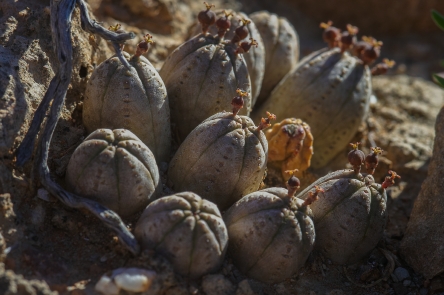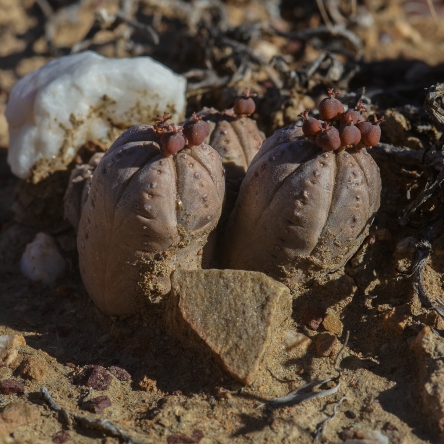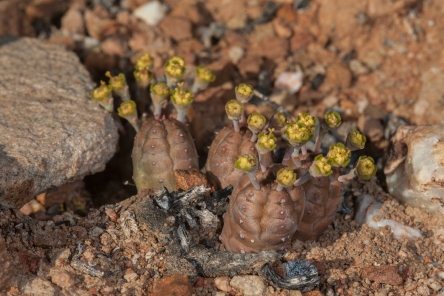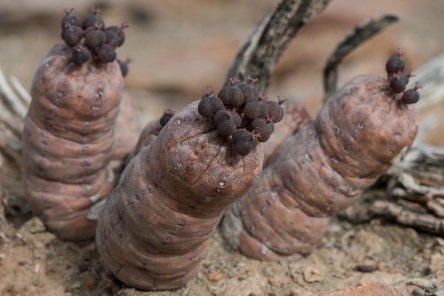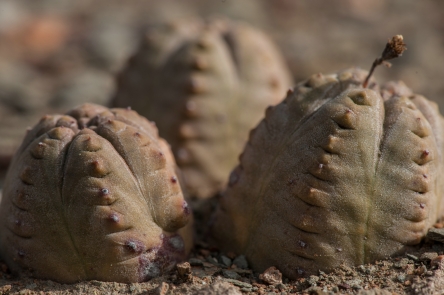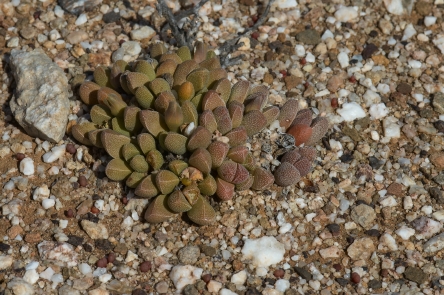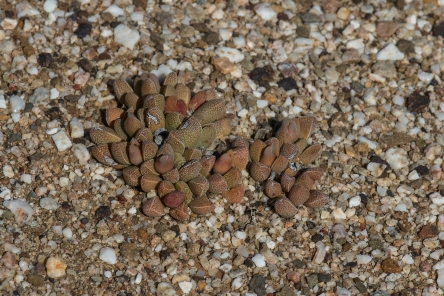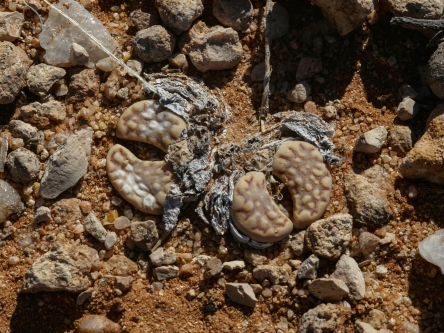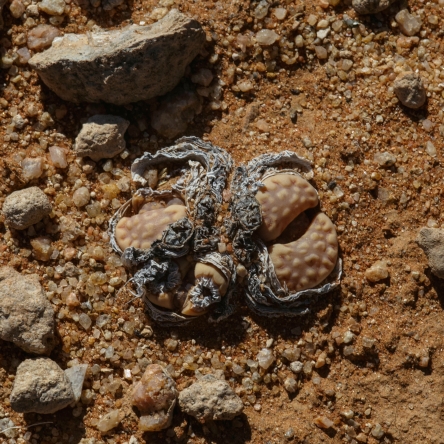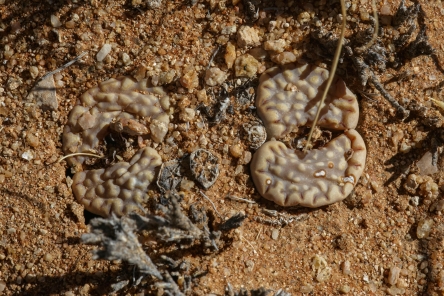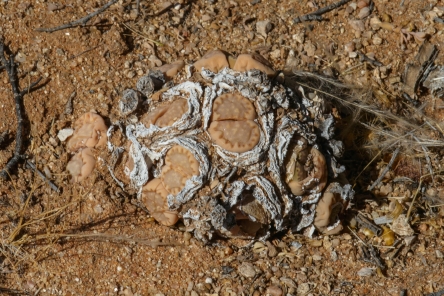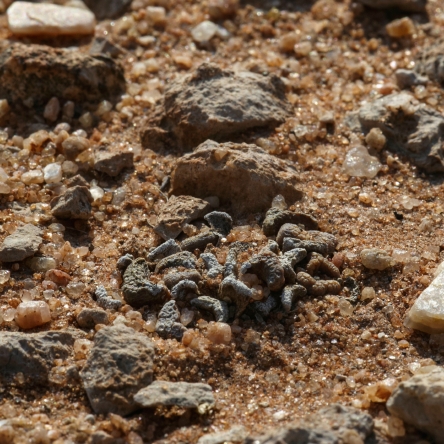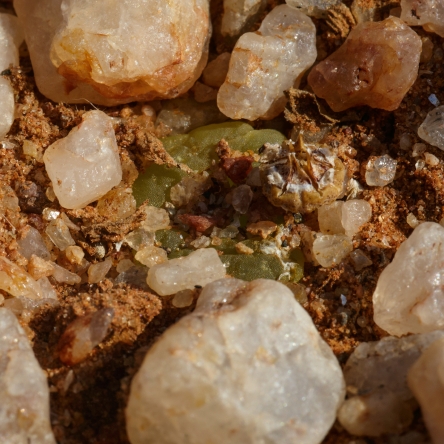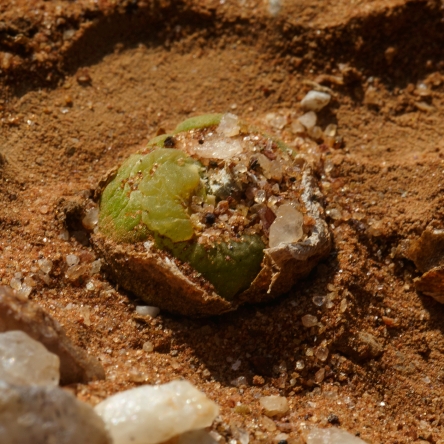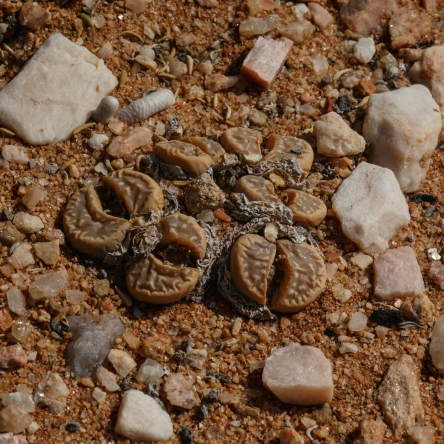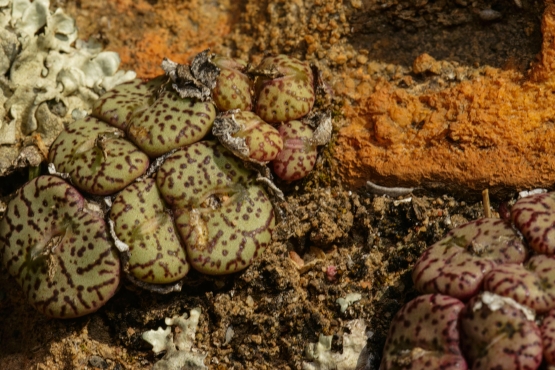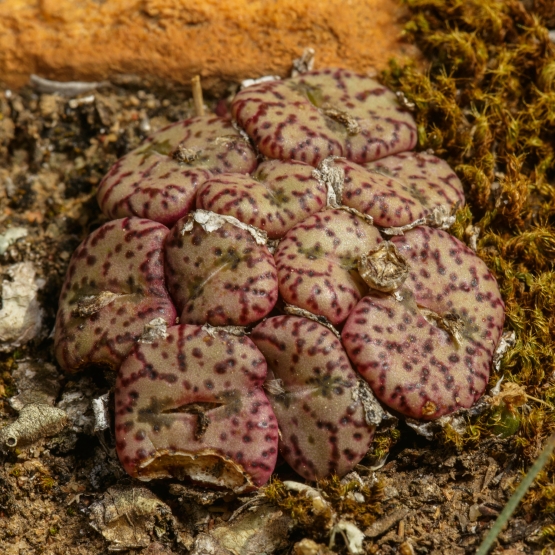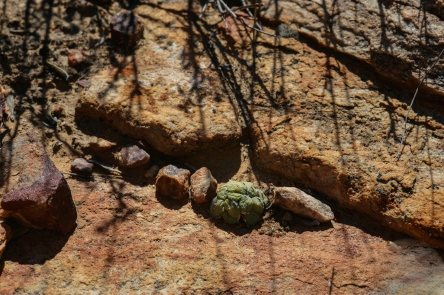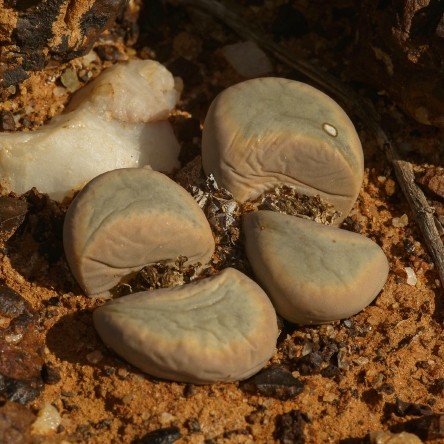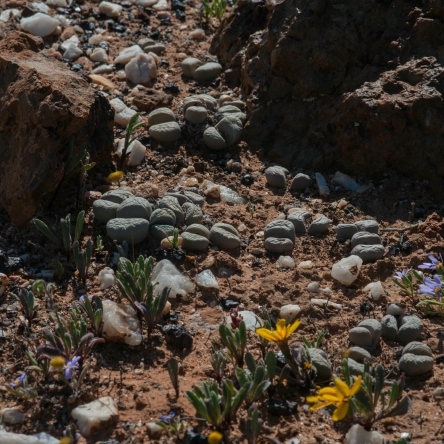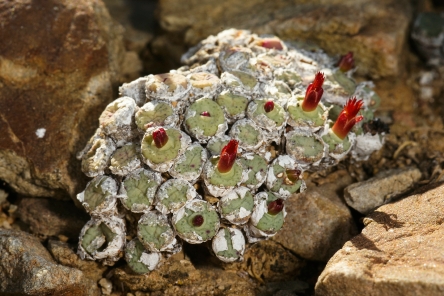This is one of the dwarf Euphorbias. According to literature it may become 15 cm tall, but the ones I have seen up to now were only a few cms. The pictures were taken south of Laingsburg, along the old road from Montagu to Ladismith, on the following dates: 1 and 2: 7 July 2009; 3: 1 May 2011; 4 and 5: 30 June 2013 (in other words: yesterday).
Tag: miniatures
Rhinephyllum muirii
Lithops julii ssp. fulleri var. fulleri
Titanopsis hugo-schlechteri
Conophytum ratum
Lithops marmorata var. marmorata
Conophytum obcordellum ssp. obcordellum var. obcordellum
Relating to your subject
Whenever I travel around with other people looking for plants and photographing them, I ‘m surprised by the speed with which they take pictures. Apparently there is something wrong with me and my equipment. By the time I have made up my mind whether a specific plant is worth a picture and have set up my gear, they are already moving on. And to be honest, often their results are not too bad either. So why would someone go for a time consuming and cumbersome approach when things can be done so much quicker and easier? Maybe we can find an answer when we look at other areas. Why would one take the trouble of cooking a proper meal, rather than grabbing a hamburger or heating up some convenience food? There are a lot of reasons, such as health, taste, atmosphere, variety, cost, the satisfaction of turning a few simple ingredients into something tasty and satisfying. There are probably even more, but you’ll get the drift.
With regard to plant photography we see a similar dichotomy. I think it all depends on the purpose of what you are doing. When you just need something to remind you of where you were and what you saw, there is no need for a beautiful photograph. Some sort of snapshot will do the trick. On the other hand , when you want to show your subject to good advantage, something more (often a lot more) is needed. It is not necessarily a matter of having the best equipment -although that may help. It is much more a matter of attitude towards your subject. You may follow the most common route: point your camera in the right direction, look in the viewfinder or on the display to check if the subject is in the middle and press the shutter. Bingo, another masterpiece. Well, maybe when you are a master, but mere mortals like me –and probably you- have to put a lot more time and effort into making a meaningful picture. By slowing down you give yourself the opportunity to properly look at your subject from different angles and distances. Each change in position will give you a new range of options and opportunities. The nearer you get to the plant, the more of a relationship with it you are building. Especially with small plants I think you have to be within touching distance in order to get a feeling for the plant and its immediate surroundings. Mind you, I’m not a tree hugger, but I’m sure that when you are able to really relate to the plant, looking it in the eye so to say, your pictures will become so much better. In other words, objective observation is not enough; without some emotion, be it admiration, pity, wonder or enjoyment, your picture will at best be a record, a documentation. Nothing wrong with that as such –but there is more satisfaction to be gained from combining documentation with emotion. Don’t take my word for it, do yourself a favour and try it out for yourself. Don’t despair when it does not work immediately.
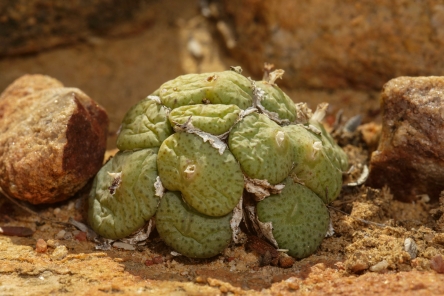
Two pictures of the same plant of Conophytum obcordellum. Which do you prefer?
